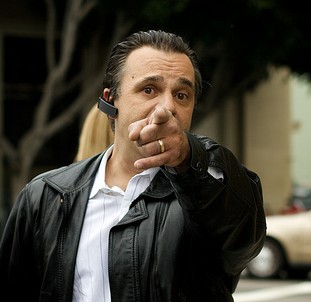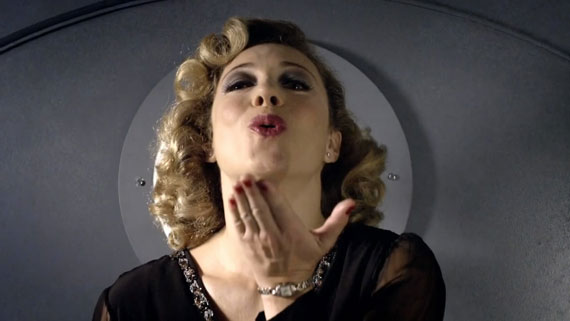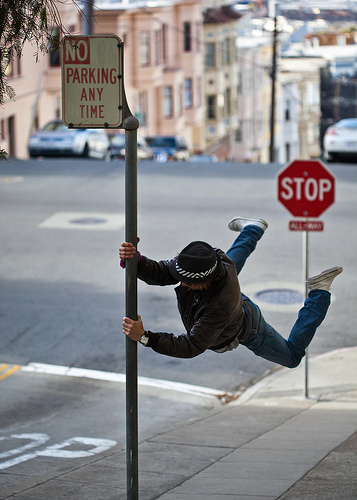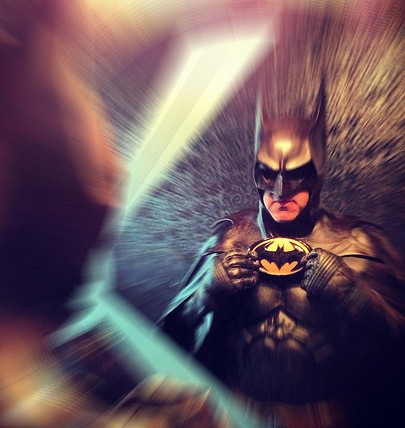The Secret to Crafting Genuine Characters for Your Novel
Think about what makes you interested or drawn to certain people. What qualities of theirs pull you in? Is it a sense of humor? Some interesting hobby or skill? Engaging style of talking or fascinating facial expressions or gestures?
Every character in your novel should have something about him that makes him interesting. It takes some work to create original, fresh, unpredictable characters, but it’s worthwhile to do. If you don’t want to spend an evening at a party among boring people, how can you expect your readers to be willing to spend ten to twenty hours of their life “hanging out” with your boring characters? We owe it to our readers to take the time to give them a unique cast of characters.
Real People Are Wholly Individual
Real people are influenced by their upbringing. Depending on their socioeconomic environment, ethnicity and subculture, geographic roots, education, and many other factors, people will not only vary in the way they move, think, and talk—they will acquire individual mannerisms and quirks and habits.
Listen to people sometime at a coffee shop or a park. Give yourself the assignment to notice these little individual flairs that seem to define each person’s personality. Be creative and imagine a history and present profile for each person as they walk by the park bench you are sitting on. Pay attention. Notice what stands out.
Word Whiskers
 I love to give each of my characters a word whisker or two. What is a word whisker? It’s an expression or phrase, or maybe even one word, that they repeat a lot (sometimes to the point of annoyance). Frank Zappa wrote a great hit song years back that his daughter, Moon Unit, “starred in” called “Valley Girl.” I especially related to that song because, yes, I was a valley girl. I great up in the San Fernando Valley in Los Angeles, and, like the “character” in his song, I hung out at the Galleria, and I did on occasion say “fer sure.”
I love to give each of my characters a word whisker or two. What is a word whisker? It’s an expression or phrase, or maybe even one word, that they repeat a lot (sometimes to the point of annoyance). Frank Zappa wrote a great hit song years back that his daughter, Moon Unit, “starred in” called “Valley Girl.” I especially related to that song because, yes, I was a valley girl. I great up in the San Fernando Valley in Los Angeles, and, like the “character” in his song, I hung out at the Galleria, and I did on occasion say “fer sure.”
In the song, among other word whiskers like “you know” and “gag me with a spoon,” the singer repeated over and over: “fer sure, fer sure.” The chorus of the song went: “She’s a valley girl, fer sure, fer sure. She’s a valley girl, and there ain’t no cure.”
Teenage girls in the “valley” decades ago (when I was young) talked like that. Yes, it was annoying and oftentimes obnoxious, and who knows where all these expressions actually came from (who cares)? But I hope you get my point. Memorable characters often have a unique way of talking, and say some repeated phrases they’ve glomped on to. It may seem like a small thing, but it’s the small quirks and behaviors we have that make us unique (and, we hope, interesting) people.
Characters in The Closer
You can make annoying, boring, insipid characters you need to have in your story interesting by giving them quirks and weird hobbies and strange gestures. I love the TV series The Closer. It’s not just a great show because of the screenwriting, which is wonderful, or the terrific episode plots. What makes The Closer so terrific is the characters that populate the series.  The main character, played by Kyra Sedgwick, is a Southern gal who comes to LA to be the head homicide detective in a precinct. Immediately she clashes with everyone there because of her quirks, foibles, upbringing, manners, perspective, and list goes on.
The main character, played by Kyra Sedgwick, is a Southern gal who comes to LA to be the head homicide detective in a precinct. Immediately she clashes with everyone there because of her quirks, foibles, upbringing, manners, perspective, and list goes on.
In addition to her being so completely at odds with every on her team (who all have to obey her and who instantly dislike her), she has really funny, unique quirks. First off, she has absolutely no sense of direction and gets lost at the drop of a hat (which her disgruntled subordinates take advantage of in the way of practical jokes). Next, she is obsessed with sweets and hides them everywhere, indulging in them with great guilt, which makes you wonder why she’s so neurotic about that. Then, this tough detective is absolutely terrorized by her sweet Southern parents. She lapses into a timid little girl when she has to answer to Daddy.
All these crazy characteristics make her highly entertaining, and of course, the more each character is set in his way and has strong personality traits, the more all characters clash with one another, which is what is desired. The creators of The Closer populated the investigative team with a riot of wild characters that are wholly believable, each with his own set of odd behaviors, speech, and attitudes. I highly recommend you watch a couple of seasons of this show (even if you aren’t into cop shows) just to study the characters.
The brilliance of this show is in the way these characters grow, change, and develop over the seasons. I mentioned in last week’s post how critical it is to have secondary characters grow and change alongside the protagonist. In The Closer, as the main character adjusts to life in LA and proves her worth to her team, those who at first opposed her become her most loyal supporters. By putting them through crucibles of fire together, they grow and change together, and their relationships strengthen.
And this is the best thing you can do to create genuine characters for your novel—have them go through tough times together. Have them deal with each other at their best and their worst, but know that conflict is the crucible that will put those relationships through severe testing.
An Exercise to Help You
Here’s a simple exercise you can do. Make a list of your secondary characters—all of them. Even the minor characters, like that waitress who shows up a few times in scenes at the diner. Hopefully you have already created a strong background for each character so they have a specific upbringing that influences who they are. You’ve come up with their core need, deepest dream, greatest fear, all designed to serve the needs of the plot and create conflict with your protagonist (yes, even the allies and romance character types).
Now, give each one a physical quirk or behavior that fits their personality. Maybe the waitress clicks her pen repeatedly; that’s her nervous habit. Or she might bite her nails because she is wired on too much coffee.
Give each character a phrase or two, maybe a saying, they like to spout. Don’t get corny here, but again, if you listen to people talk at the park or Starbuck’s you will pick up on these word whiskers. Don’t clutter your novel with “ums” and “uhs” to mimic real life. Those aren’t interesting word whiskers. Instead, think of something catchy.
In my fantasy novel The Wolf of Tebron, I created a wolf that mostly embodied the wisdom of G. K. Chesterton, a writer I feel had gobs of great sayings (I also drew from C. S. Lewis). So I gave my wolf, Ruyah, two things he said over and over: “Fancy that,” and “It is said among wolves . . .” My protagonist got a bit tired of hearing him say those words so often, but having Ruyah do so fit his character and, I hope, made him memorable. I recall a minor character in the TV series LA Law decades ago—an annoying guy—who always said “Correct me if I’m wrong.” He was a great character, and I wanted to whack him upside the head all the time. But that phrase of his was almost iconic for his personality—perfect.
Don’t overdo it here. Don’t fill your novel with crazy characters all spouting repeated silly expressions to excess. Some people don’t have favorite phrases. But they will have some gesture or facial expression or quirk that is unique to them, and that’s what you want to bring out in a way that showcases who they are.
You Should Create Characters You Love
Try to create characters you love. That entertain, move, inspire you. If you can get your characters to make you laugh or cry, you are on the path to creating a memorable novel.
So what’s the secret to crafting genuine characters? Don’t settle for the stereotype. Spend time really observing people and notice their individual mannerisms, way of speaking, gestures. Great characters are wholly unique, have odd quirks, say repeated words and phrases they’ve picked up. When each character you create fascinates you to the point you want to be around them and see what they do and say next, you’ve done your job.
This wraps up our exploration into the sixth key pillar of novel construction: Secondary Characters with Their Own Needs. I hope you’ve learned some great insights into how to craft these important characters for your novel. And now . . . you get a new checklist! Be sure to carefully consider all the twelve sets of questions on your checklist. If you can answer them to your satisfaction, you know you have a strong pillar that will hold up your story.
Ready for the next one? We’ll be looking at another of my favorites: Setting with a Purpose.
Got some thoughts about how to craft a unique character? What helpful point have you learned about creating secondary characters that you didn’t know before and plan to work into your novel?
Inspection checklists:
Inspection Checklist 1-concept with a kicker
Inspection Checklist 2-protagonist with a goal
Inspection Checklist 3-conflict with high stakes
Inspection Checklist 4-theme with a heart
Inspection Checklist 5-Plots and Subplots in a String of Scenes
Inspection Checklist 6-Secondary Characters with Their Own Needs












This is a really excellent post, Susanne. Thanks, very much. I love the section on Word Whiskers. I have a character who has quite a unique Word Whisker when he is happy and one when he is not so happy.
Do you have a checklist for a protagonist (MC) you can share?
Thanks & best wishes,
Pete.
The checklist for protagonist with a goal is on the bottom of the posts. This isn’t a character development sheet though. Refer to Elizabeth George’s book Write Away for great ideas on questions to ask characters.
I loved this post for two reason: 1) I’ve never heard the term “word whiskers” before and am already applying them to my characters. 2) I totally remember the song Valley Girl (+ the movie with Nicolas Cage). You’ve broadened my horizons, and made my day. Thanks!
Hi – excellent tips as ever. I love this word whisker idea. I find I do this quite often, for instance I have a character who perpetually says ‘…and do you know what?’ and one who’s speech is, while it is not an actual word whisker,one long sentence without punctuation because she speaks in a steady line of ‘verbal diarrhea’.
Thanks Susanne for all of these posts. I have finally caught up on reading them all. I was just starting to rewrite my novel when I came upon these. The checklists have really helped me see where I have holes. I think I have a few word whiskers but not enough mannerisms. It will help to go back now and see what I can add for each character.
On a side note, I grew up in the Valley during the Valley Girl years. What High School did you attend if I may ask? I went to Grover Cleveland High.
I went to University (Uni) High in West LA after attending Oakwood private school for 7-10th (in North Hollywood). Went to Sherman Oaks Elementary School.
It has taken me a few weeks, but I have finally caught up to you in this most recent post. I set aside this summer to do some self learning or Writing 101 and starting your blog from Jan 1 and catching up to most recent was my goal for August. Check.
I will just copy other readers and compliment you on your generosity in freely giving of your time and wisdom to prevent other writers from making the same mistakes you did so many years ago. I wish I had found your blog series a lot sooner! There are so many facets to writing a well constructed story, that it can be very intimidating for a first time writer to realize exactly how much goes into crafting a good novel.
You have made me examine all my characters from my first novel and realize why certain characters were picked on by beta readers to eliminate or at least reduce to minimal intrusiveness. In crafting in my second novel, I am carefully asking myself why each character is in the novel, what part do they play and it has made me strengthen the role of some, as well as introduce a new one. I will have to rethink the characters in my first novel to see what if any quirks or foibles I have given them and will pay more attention to that for the characters in my second novel for sure.
I’m so glad all these posts are helping. Creating great characters is the key to a great novel, and few novels I critique or edit have those rich, complex characters with a real past and driven by core needs based on that past. I wish you great fun and success as you work on this!
Thank you for this wonderful series on the 12 pillars. It has been so helpful! Designing interesting plots comes so naturally to me, but I struggle with creating characters. Your blogs on secondary characters gave me some great insight on how to make mine come to life. One of my favorite secondary characters is Sam in Lord of the Rings. I love the way he grows from a shy hobbit into a courageous loyal friend. Now that I’ve read your blogs, I have some sculpting tools in my toolbox. Thanks again!
Another great post to highlight that word whiskers identify. What you don’t elaborate on is how these make for much pacier dialogue because they identify the speaker without the ‘he or she said’ labels. One that comes to mind is the mother-in-law who always announces her (unwelcome) arrival with ‘It’s only me…’
Thanks for these helpful tips. I’ve bookmarked this post for future reference. Now I’m going to look at your Inspection Checklists.
Great and helpful post. Thanks! It just made me think of the character of Barney Stinson of “How I met your mother”, he has a ton of these catch phrases. He is simply “legen- wait for it- dary”.
What a great post! I have a friend who, when telling us of any conversation, will invariably include “so I turned round and said …” It’s part of who she is. I love the term word whisker!